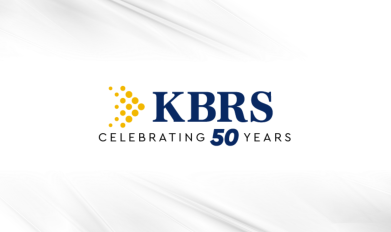Employee engagement has headlined top business blogs and articles for over a decade and although we are making some inroads, many employers and managers still don’t understand what engagement is—let alone how it can impact their bottom line. Top 500 firms in North America do, however, tend to be more in tune with the benefits of an engaged workforce; namely decreased turnover and significantly increased client satisfaction, revenue, earnings per share and profit (up to 2.5 times that of competitors with low engagement). Sadly, there is still room to grow with 60 per cent of employees worldwide partially or fully engaged and 40 per cent partially or actively disengaged (Aon Hewitt 2013).
What does that actually mean? There are hundreds of definitions of what engagement means; however, one thing rings true throughout: engaged workers go above and beyond for their clients, colleagues and organizations. You know that engaged employee, don’t you? The one whom you rely on most, whom you trust, and you know he/she will be there and committed to your company during tough times. For each four employees, there is one actively engaged, two partially engaged or disengaged and one actively disengaged. That actively disengaged worker we could call the “toxic employee”, who is really not bringing value or could even be actively sabotaging ongoing work. Sadly, I am sure you know who that person is, as well.
So how do you try to tap into those higher levels of engagement? Based on decades of research with top employers, here are some key drivers of engagement:
How much do employees trust you? Not surprising that if they trust you, they are willing to go the extra mile. The hard part is earning their trust. Suffice it to say, some key areas to consider that instil trust include the ability to listen (truly listen), follow-through with action, how well difficult messages are communicated, and finally to “walk the talk” and ensure the company’s values and beliefs are demonstrated by the leader for staff on a daily basis. Yes, all easier said than done; however, these are key traits of successful leaders, so what is one area you personally can commit to improving? Who can support you through training, mentorship and/or feedback?
Do I matter? Employees need to know that what they do does actually impact the larger project or organizational goals. Employees need to understand the company’s goals and its level of performance toward those goals and more importantly how he/she fits into the goal and helps drive it forward, also known as “line of sight”. From cleaning a floor to managing a major project, there is value in all work that is required to achieve organizational goals; you just have to communicate it!
Does this company have opportunities for promotion? More and more, especially with younger generations, the ability to “move up” within the ranks is critical. Don’t panic if your organization has less opportunities to go “up” as long as you can offer the capacity for career growth. This growth can be lateral, working in different areas or disciplines, taking on other projects, or even just advancing skills within a current role through training, delegation or mentorship. The key is in either the development of career programs alongside succession planning or just ensuring leaders are trained to have the conversations, understand what is possible within the organization and ensure leaders work together to develop high-potential employees.
What about me? It is fine to have a career development program; but each employee needs to feel that specific efforts are being made for them. Managers and leaders need to understand that programs can’t take care of their employees; it is up to them to have the conversation with each employee, understand their interests and help develop them on an individual basis. Sound daunting? One conversation to understand their interests and motivations and follow-through with action, to give them an opportunity to grow and evolve even within their current role, could take less than a few hours of conversation and planning. So what is stopping you?
Despite these tried-and-true strategies, one thing can make or break engagement – your leaders! They hold the key to whether engagement can drive the business; no programs, policies or communications have any chance of success without the team-leads right up to top executives who buy in to the principles and process and most importantly, understand how to implement and drive engagement through effective communication. In fact, how an employee feels about his/her manager is the number one influencer of engagement. How can it not be? With direct impact over what an employee does within their role, how they are compensated, promoted, recognized and communicated with, it is truly hard to deny. So when an employee leaves the organization, who owns that?
As a leadership consultant and coach, I hear every day about the challenges within organizations which can often be crippling and result in higher turnover and limited levels of productivity. Interestingly, I heard a statistic recently that rings true: we hire 80 per cent of new hires for their experience and technical expertise while we fire 80 per cent of the time for their inability to communicate and overall lack of “people skills”. To engage workers, the latter is critical, so let’s make sure we think beyond the résumé and explore with potential managerial recruits—not what they have done as leaders over the years, but how they did it and the impact on their teams. What is the point of achieving production targets if it results in a 40 per cent turnover? These essential people skills can be learned, but those with a natural or already learned ability will be able to drive engagement and performance quickly and even help to model this behaviour for others. How can you modify your recruitment practices to attract people leaders?
Realistically, most current leaders lack these communication and people skills so employers and senior leader need to invest in their development; first to help drive engagement and performance and ultimately, to hit the bottom line. With increased revenue up for grabs through an engaged workforce, what is there to lose?
This article originally appeared in the Newfoundland & Labrador Construction Association Journal (2014). Download PDF.







